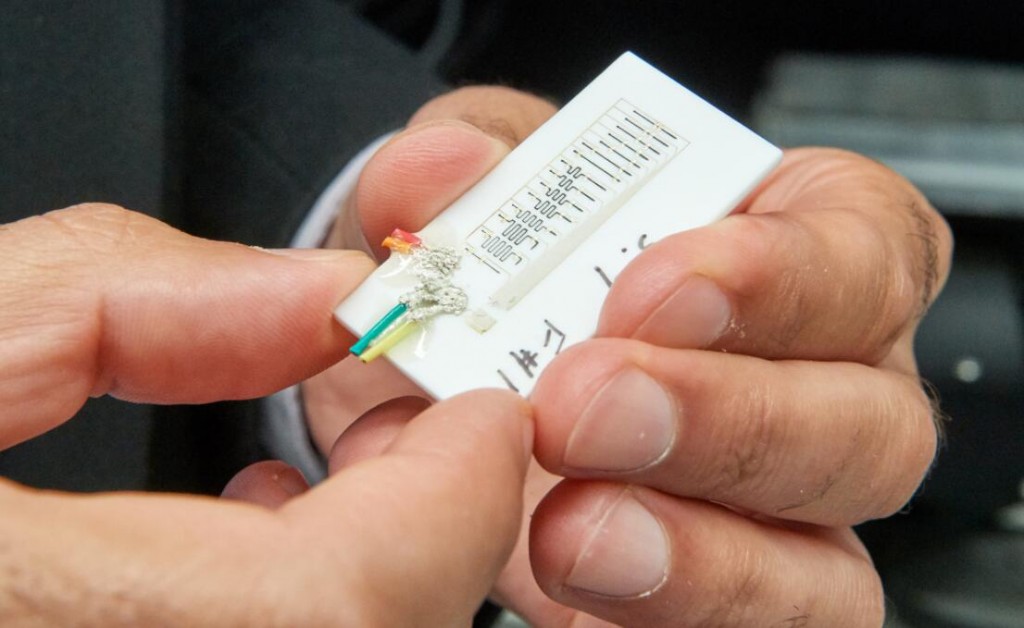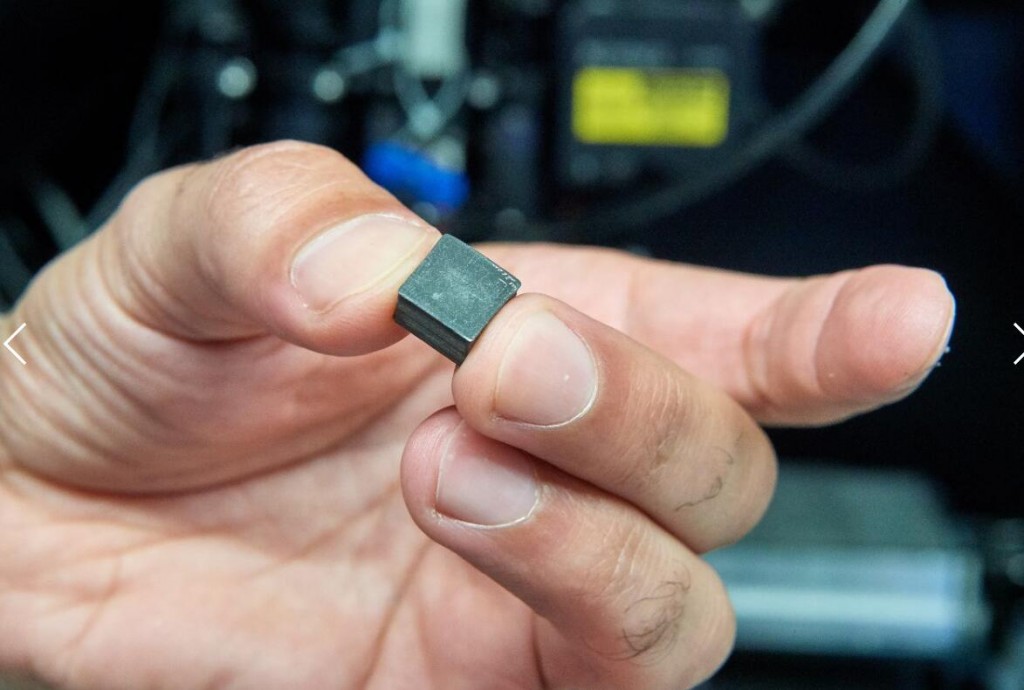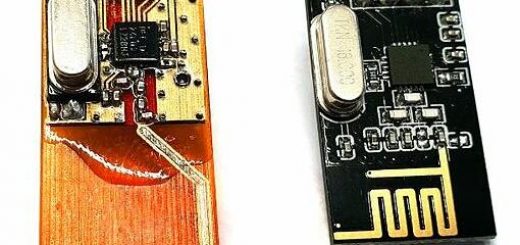‘Smart’ Machine Components Alert Users to Damage and Wear
Scientists at the United Technologies Research Center and UConn are using advanced additive manufacturing technology to create ‘smart’ machine components that alert users when they are damaged or worn.
The researchers also applied a variation of the technology to create polymer-bonded magnets with intricate geometries and arbitrary shapes, opening up new possibilities for manufacturing and product design.
The researchers also applied a variation of the technology to create polymer-bonded magnets with intricate geometries and arbitrary shapes, opening up new possibilities for manufacturing and product design.
The key to both innovations is the use of an advanced form of 3D printing called direct write technology. Unlike conventional additive manufacturing, which uses lasers to fuse layers of fine metal powder into a solid object, direct write technology uses semisolid metal ‘ink’ that is extruded from a nozzle. The viscosity of the metal ink looks like toothpaste being squeezed from a tube.

UConn and UTRC scientists are using advanced additive manufacturing to create novel wear sensors that can be embedded into machine parts.Image Courtesy of Peter Morenus/UConn.
This process allowed the UConn-UTRC scientists to create fine lines of conductive silver filament that can be embedded into 3D printed machine components while they are being made. The lines, which are capable of conducting electric current, act as wear sensors that can detect damage to the part.
Here’s how they work. Parallel lines of silver filament, each coupled with a tiny 3D-printed resistor, are embedded into a component. The interconnected lines form an electrical circuit when voltage is applied. As lines are embedded deeper and deeper into a component from the surface, each new line and resistor are assigned an increasingly higher voltage value. Any damage to the component, such as wear or abrasion caused by friction from moving parts, would cut into one or more of the lines, breaking the circuit at that stage. The more lines that are broken, the greater the damage. Real time voltage readings allow engineers to assess potential damage and wear to a component without having to take an entire machine apart.
To get a better idea of how these micro sensors might be used, imagine them being embedded in the ceramic coating of a jet engine turbine fan blade. These blades are subjected to tremendous physical forces and heat. A microscopic crack in the protective coating could potentially be catastrophic to the blade’s performance, yet invisible to the naked eye. With the embedded sensors, mechanics would be alerted to any blade damage promptly so it can be addressed.
“This changes the way we look at manufacturing,” says Sameh Dardona, associate director of research and innovation at UTRC, which serves as the innovation engine for United Technologies Corp. “We can now integrate functions into components to make them more intelligent. These sensors can detect any kind of wear, even corrosion, and report that information to the end user. This helps us improve performance, avoid failures, and save costs.”
The UConn-UTRC team was able to embed sensor lines that were just 15 microns wide and 50 microns apart. That’s much thinner than an average human hair, which is about 100 microns. This allows detection of very minute damage. Developing such a precise sensor isn’t easy. UConn associate professor of chemical and biomolecular engineering Anson Ma and a Ph.D. student from Ma’s Complex Fluids Laboratory, Alan Shen, measured and optimized the flow properties of the silver-infused ink so that micron-sized lines could be reliably deposited without clogging the nozzle or causing substantial spreading after deposition.
UTRC’s Dardona has applied for a patent for the embedded wear sensor technology.
The scientists also used direct write technology to create novel components that have magnetic coatings or magnetic material embedded inside them. These polymer-bonded magnets are capable of conforming to any variety of shape, and eliminate the need for separate housings in machines requiring magnetic parts.
“This opens up a lot of exciting opportunities,” says Ma. “Imagine magnets that can take on different shapes and fit seamlessly between other functional components. Also, the resultant magnetic field that is created may be further manipulated and optimized by changing the shape of the magnets.”
 A 3D-printed magnet created using direct write technology at the UTC Research Center.Image Courtesy of Peter Morenus/UConn.
A 3D-printed magnet created using direct write technology at the UTC Research Center.Image Courtesy of Peter Morenus/UConn.
The magnet fabrication method developed by UConn and UTRC significantly improves upon existing manufacturing practices in other ways too. Current methods for creating custom 3D-printed magnets rely on high-temperature curing, which unfortunately reduces a material’s magnetic properties as a result. The scientists at UConn and UTRC found a way around that problem by using low-temperature UV light to cure the magnets, similar to how a dentist uses UV light to harden a filling. The resultant magnets exhibited significantly better performance than magnets created by other additive manufacturing methods.
Magnets have a wide range of industrial applications, from creating electric currents in alternators to tracking the position or speed of moving parts as high-grade sensors. Embedding magnetic material directly into components could lead to new product designs that are more aerodynamic, lighter, and efficient, Dardona says.
The collaboration also benefits UConn. Shen, the Ph.D. student in Ma’s lab, served as a lead researcher on the two projects, developing, testing, and re-testing the new technology over the past three years.
“These kinds of collaborations allow us to help companies like UTC develop new technologies that we know they are going to take to the next level,” says Ma. “It’s also very rewarding for our students. Students involved in these projects are fully integrated into the research team. It’s not only great from a workforce development perspective; it also gives students a chance to work closely with professional engineers in a beautiful facility like UTRC.”
More detailed information about fabrication of the wear sensors can be found in an article in Additive Manufacturing. Details about the direct write production of polymer-bonded magnets can be found in an article in the Journal of Magnetism and Magnetic Materials. Two UTRC engineers, Dustin Caldwell and Callum Bailey, also contributed to the research.
Source: UConn Today




Recent Comments